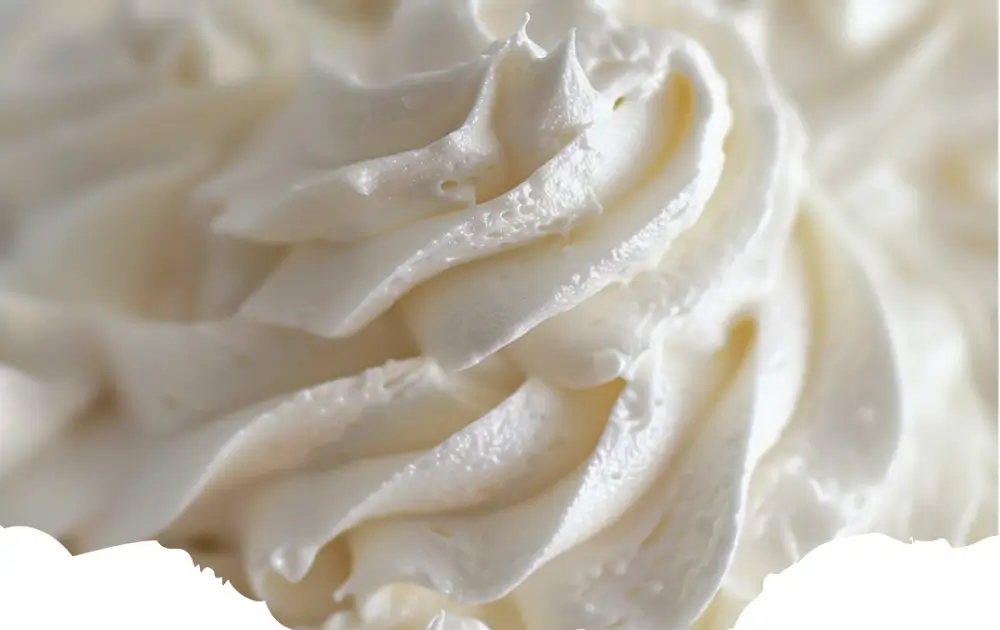Milk Frosting, with its creamy texture and delicate sweetness, is a versatile topping beloved by bakers for its ability to complement a wide array of desserts. Unlike heavier buttercreams or overly sweet fondants, milk frosting offers a lighter, yet equally indulgent, alternative that pairs wonderfully with everything from cupcakes to layered cakes.
Gathering Essential Ingredients
To create this luscious frosting, you’ll need just a few key ingredients: milk, granulated sugar, flour, and unsalted butter. The simplicity of the ingredients belies the richness of the frosting’s flavor and texture. For an enhanced taste, a dash of vanilla extract or a pinch of salt can be added, tailoring the frosting to your specific dessert needs.
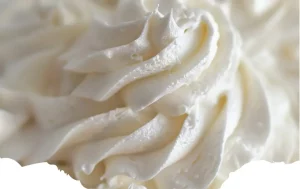
The Step-by-Step Creation Process
The process begins by whisking together milk and flour in a saucepan over medium heat until the mixture thickens to a paste. This base is then cooled to room temperature. Separately, butter and sugar are creamed together until light and fluffy, at which point the cooled milk mixture is gradually incorporated. The final step involves beating the combined mixture until it reaches a smooth, silky consistency.
Customizing Your Milk Frosting
One of the joys of milk frosting is its adaptability. By incorporating cocoa powder, citrus zest, or pureed fruit into the base recipe, you can create a variety of flavors to suit any dessert. This customization makes milk frosting an excellent choice for those looking to experiment with their baking while keeping the process straightforward and enjoyable.
Perfect Pairings and Serving Suggestions
Milk Frosting shines when spread atop rich chocolate cupcakes, vanilla sponge cakes, or even as a filling for sweet, tender pastries. Its lightness makes it an ideal choice for spring and summer desserts, offering a refreshing counterpart to the heavier textures and flavors of traditional frostings.
The Joy of Milk Frosting in Baking
Crafting Milk Frosting not only elevates your desserts but also brings the satisfaction of creating something both beautiful and delicious. The process, from the initial stirring of milk and flour to the final swirls atop your baked creation, is a testament to the beauty of baking. Milk Frosting, with its creamy texture and customizable flavor, invites bakers to explore their culinary creativity, making each dessert not just a treat, but a personalized work of art.
Ensuring Consistency and Smoothness
Achieving the perfect consistency and smoothness in Milk Frosting hinges on the meticulous creaming of butter and sugar. It’s crucial to beat these ingredients until the mixture is not just combined but airy and pale. This step ensures that when the milk mixture is added, it integrates seamlessly, avoiding any lumps and creating that sought-after velvety texture.
Storing and Applying Milk Frosting
Milk Frosting’s best attribute might be its stability at room temperature, making it ideal for events or long display times. However, if not used immediately, it should be stored in the refrigerator. Before using chilled frosting, allow it to come to room temperature and then re-whip it to restore its fluffy texture, ensuring it spreads smoothly over your cakes or cupcakes.
Decorating with Precision and Creativity
Armed with Milk Frosting, decorators can achieve both precision and creativity in their designs. Its smooth consistency is perfect for piping detailed patterns and writing, while its adaptable base can be colored with food dyes for vibrant decorations. Whether you’re aiming for elegant simplicity or intricate artistry, Milk Frosting provides the perfect canvas for your creative expressions.
Celebrating Special Occasions with Milk Frosting
Milk Frosting is not just a topping; it’s a celebration on a spoon. Its light and creamy texture make it a favorite for birthday cakes, wedding desserts, and special occasion pastries. Personalize it with flavors or colors to match the theme of your event, turning each dessert into a festive centerpiece that tastes as delightful as it looks.
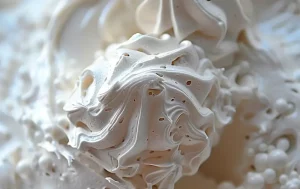
The Unrivaled Versatility of Milk Frosting
The true beauty of Milk Frosting lies in its unparalleled versatility. From airy cakes to rustic pies, it complements a vast array of desserts without overwhelming their flavors. Its ability to be both flavored and colored, along with its ease of spreading and piping, makes it a go-to choice for both novice bakers and professional pastry chefs alike, proving that sometimes, the simplest ingredients can create the most extraordinary results.
Mastering Milk Frosting for All Seasons
Milk Frosting’s appeal extends through all seasons, with its adaptability making it a year-round favorite. In the warmer months, adding lemon zest or berry purees can give it a refreshing twist, perfect for summer cakes. Conversely, incorporating spices like cinnamon or nutmeg can transform it into a cozy complement for winter treats. This flexibility allows bakers to tailor their desserts to the season, ensuring that their creations are always in harmony with the time of year.
Nutritional Considerations and Alternatives
While Milk Frosting is undeniably indulgent, it’s possible to modify the recipe for those with nutritional concerns. Substituting part of the butter with lower-fat alternatives or using skim milk can reduce the overall calorie content. For those with dietary restrictions, plant-based milks and butters can be used to create a dairy-free version, ensuring everyone can enjoy the delightful texture and flavor of this classic frosting.
Engaging Community Through Baking
Sharing a recipe like Milk Frosting or a cake adorned with it can be a wonderful way to engage with your community, whether it’s through a bake sale, a community event, or a simple gathering of friends and family. Baking is not just about the delicious end product; it’s about the joy of creating something with love and sharing that joy with others. Milk Frosting, with its simple recipe and wide appeal, is an excellent choice for communal baking experiences.
Innovative Uses Beyond Cakes and Cupcakes
Beyond traditional cakes and cupcakes, Milk Frosting can be creatively used in a variety of desserts. It works beautifully as a filling for sandwich cookies, as a topping for homemade doughnuts, or even swirled into brownies before baking for a creamy twist. These innovative uses showcase the frosting’s versatility and ability to elevate any dessert from ordinary to extraordinary.
Reflections on the Art of Frosting
The art of making and using Milk Frosting is a testament to the creativity and passion that baking embodies. From choosing the ingredients to applying the final touches on a dessert, each step is an opportunity to express oneself and to bring joy to others through food. Milk Frosting, with its elegant simplicity and delicious taste, is more than just a topping; it’s a celebration of the pleasures of baking and the endless possibilities it offers to those willing to explore its depths.
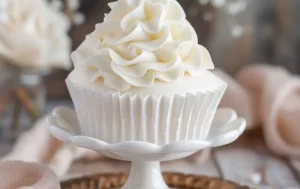
Elevating Simple Desserts with Milk Frosting
The transformative power of Milk Frosting goes beyond elaborate cakes, proving that even the simplest desserts can be elevated into something special. A dollop on a warm cookie or a swirl atop a homemade muffin can turn everyday treats into delightful indulgences. This ability to enhance the ordinary makes Milk Frosting a cherished tool in any baker’s repertoire, encouraging the exploration of new combinations and the rediscovery of classic flavors.
Tips for Achieving the Perfect Frosting Consistency
Achieving the perfect consistency with Milk Frosting requires attention to detail and an understanding of texture. The key lies in the balance between the milk and flour mixture and the whipped butter and sugar. If the frosting is too thick, a little extra milk can soften it; if too runny, additional powdered sugar can help thicken it without altering the taste significantly. These adjustments ensure that the frosting is just right for spreading or piping.
Celebrating Milestones with Milk Frosting
It isn’t just for any day; it’s also perfect for celebrating milestones. Whether it’s a birthday, an anniversary, or a personal achievement, a dessert topped with this creamy frosting becomes a symbol of celebration. Customizing the flavor to the honoree’s preference adds a personal touch that makes the occasion even more memorable, demonstrating the thoughtful artistry that baking can embody.
Sustainability in Baking with Milk Frosting
Sustainable baking practices can also be applied when making Milk Frosting. Using ingredients from local producers or organic farming not only supports sustainable agriculture but can also enhance the flavor of the frosting. Additionally, creative use of leftovers—like turning day-old cupcakes into cake pops coated with it—reduces waste and promotes a more responsible approach to baking.
The Universal Language of Milk Frosting
Ultimately, this recipe speaks the universal language of comfort and joy. It transcends cultural and geographical boundaries, bringing people together through the shared experience of baking and enjoying food. Whether it’s part of a family recipe passed down through generations or a new invention shared among friends, it remains a testament to the communal and celebratory nature of baking, inviting everyone to partake in its creamy, sweet embrace.
FAQs about Milk Frosting
Can I use it on warm desserts? Yes, you can use it on warm desserts, but be mindful that it may melt slightly depending on the temperature. For best results, allow the dessert to cool a bit if you desire the frosting to maintain its shape.
How long does it last in the refrigerator? It can be stored in an airtight container in the refrigerator for up to one week. Before using, let it come to room temperature and give it a good stir to ensure it’s smooth and spreadable.
Can this recipe be colored or flavored? Absolutely! it can easily be flavored with extracts, zest, or cocoa powder and colored with food coloring to suit your dessert’s theme or your personal preference.
Is milk frosting suitable for piping designs? Yes, it is suitable for piping designs. Its creamy texture holds up well in a piping bag, allowing for detailed and intricate decorations on cakes and cupcakes.
Can I make it without flour? Traditional milk frosting recipes use flour to thicken the mixture, but for a gluten-free option, you can try using cornstarch as a substitute. Keep in mind, the texture and taste may vary slightly.
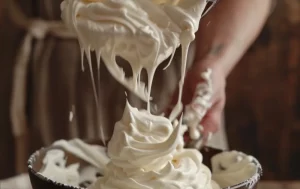
Conclusion
This recipe is a wonderfully versatile and delightful addition to any baker’s recipe collection. With its creamy texture, subtle sweetness, and ease of customization, it stands out as a favorite choice for decorating and enhancing a wide range of desserts. From simple family gatherings to grand celebrations, milk frosting brings a touch of elegance and joy to every occasion. Its simplicity in preparation encourages even novice bakers to explore their creativity and share the fruits of their labor with loved ones. In the world of baking, where the options are endless and the flavors boundless, milk frosting remains a timeless classic, cherished for its ability to unite tradition and innovation on a single plate.
Print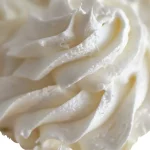
Milk Frosting
- Total Time: 15 minutes
- Yield: About 2 cups 1x
- Diet: Vegetarian
Description
Milk Frosting is a creamy, smooth, and versatile frosting that’s perfect for topping cakes, cupcakes, and various desserts. It’s known for its light texture and just-right sweetness, making it an ideal choice for those who prefer a less heavy frosting than traditional buttercream.
Ingredients
1 cup whole milk
5 tablespoons all-purpose flour
1 cup (2 sticks) unsalted butter, room temperature
1 cup granulated sugar
1 teaspoon vanilla extract
Instructions:
Prepare Milk Mixture:
Instructions
In a medium saucepan over medium heat, whisk together the milk and flour.
Cook, whisking constantly, for 4 minutes, or until the mixture thickens and resembles a very thick pudding. It should coat the back of a spoon.
Remove the pan from the heat and let the mixture cool to room temperature.
Cream Butter and Sugar:
In the bowl of a stand mixer fitted with the paddle attachment, cream together the butter and sugar on medium speed until light and fluffy (approximately 3 minutes).
Stop the mixer and use a rubber spatula to scrape down the sides of the bowl.
Incorporate Milk Mixture:
Add the cooled milk mixture to the bowl of the stand mixer.
Beat on medium-high speed until the frosting is light and fluffy, pausing to scrape down the sides of the bowl as needed.
Add Vanilla:
Switch to the whisk attachment.
Add vanilla extract and mix on high until the frosting is smooth and creamy.
Enjoy your delicious milk frosting! ![]()
![]()
Notes
- For a thicker frosting, add an extra tablespoon of flour to the milk mixture.
- This frosting can be flavored with cocoa powder, citrus zest, or fruit purees for variety.
- Ensure the milk mixture is completely cooled before adding to the butter and sugar to prevent melting.
- Prep Time: 10 minutes
- Cook Time: 5 minutes
- Category: Dessert
- Method: Cooking, Mixing
- Cuisine: American
Nutrition
- Calories: 150
- Sugar: 17g
- Sodium: 10mg
- Fat: 9g
- Saturated Fat: 6g
- Carbohydrates: 17g
- Protein: 1g
- Cholesterol: 25mg

